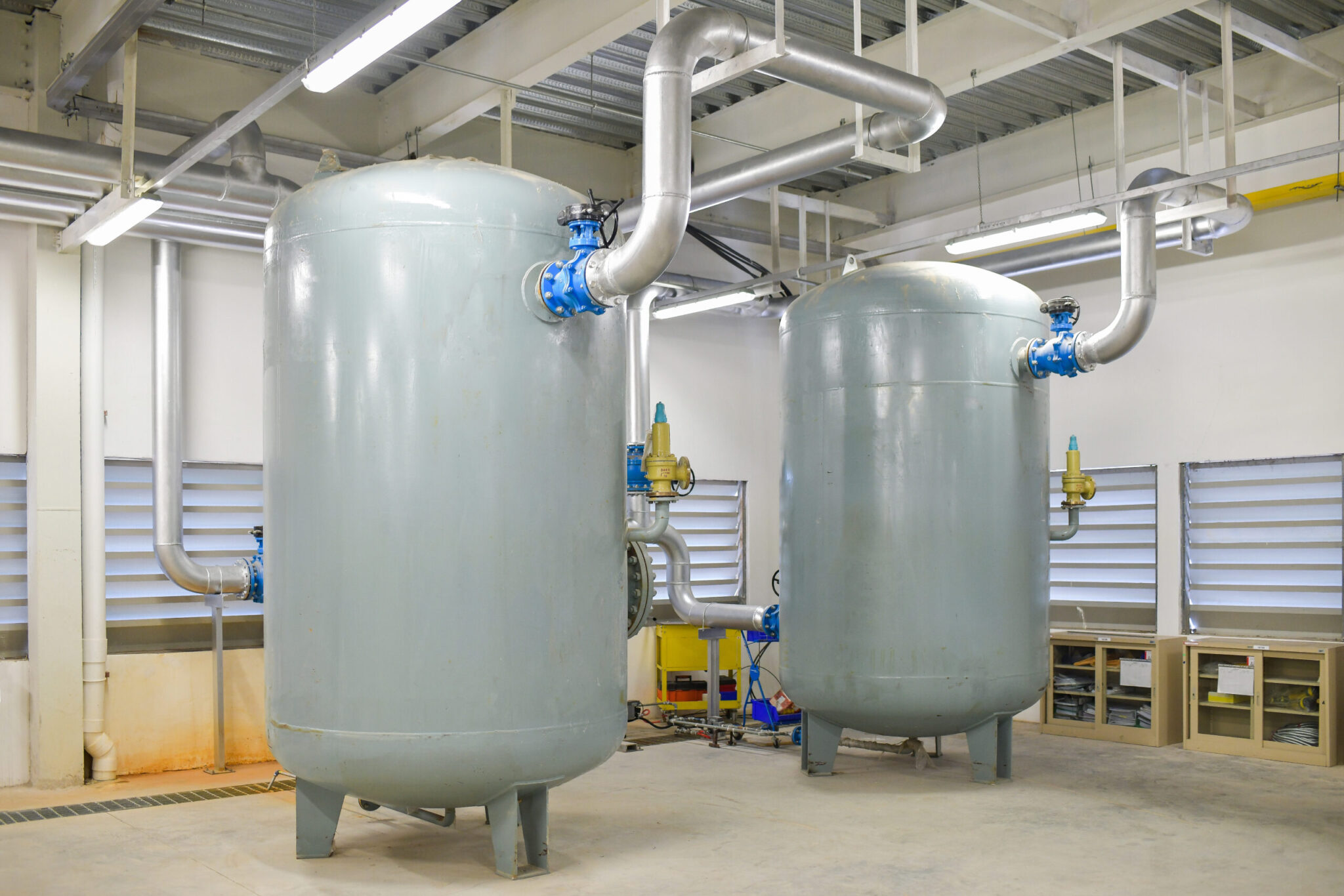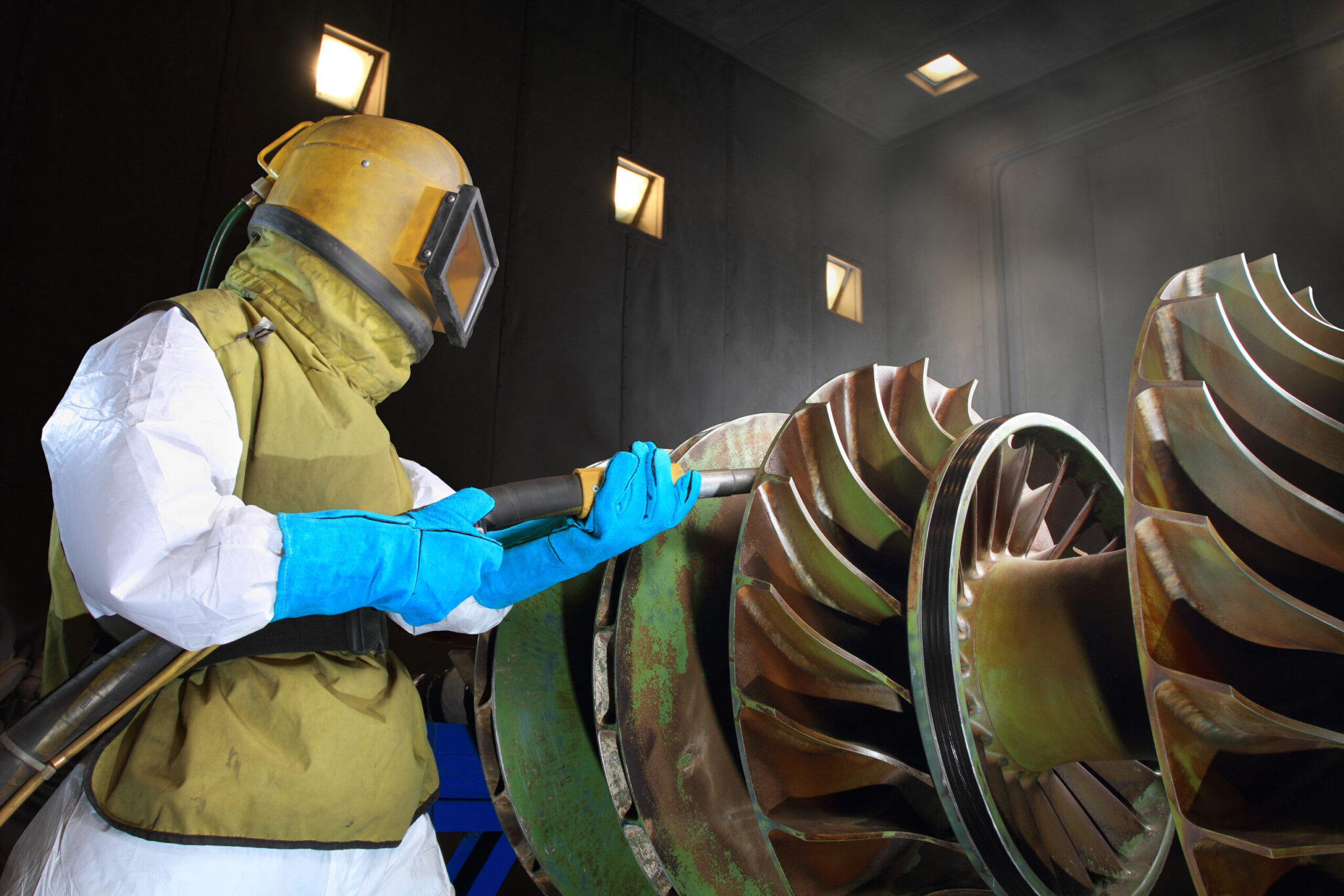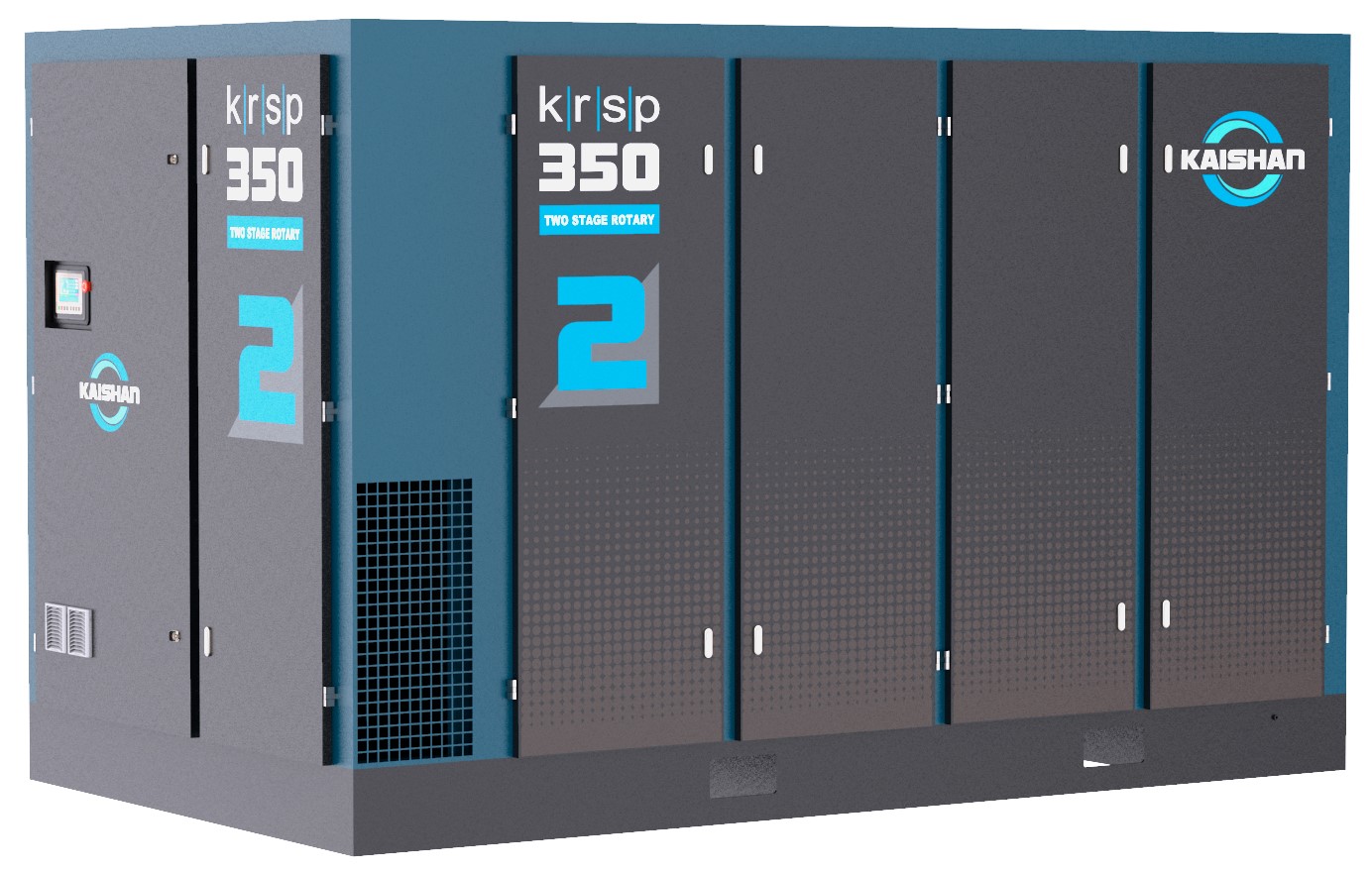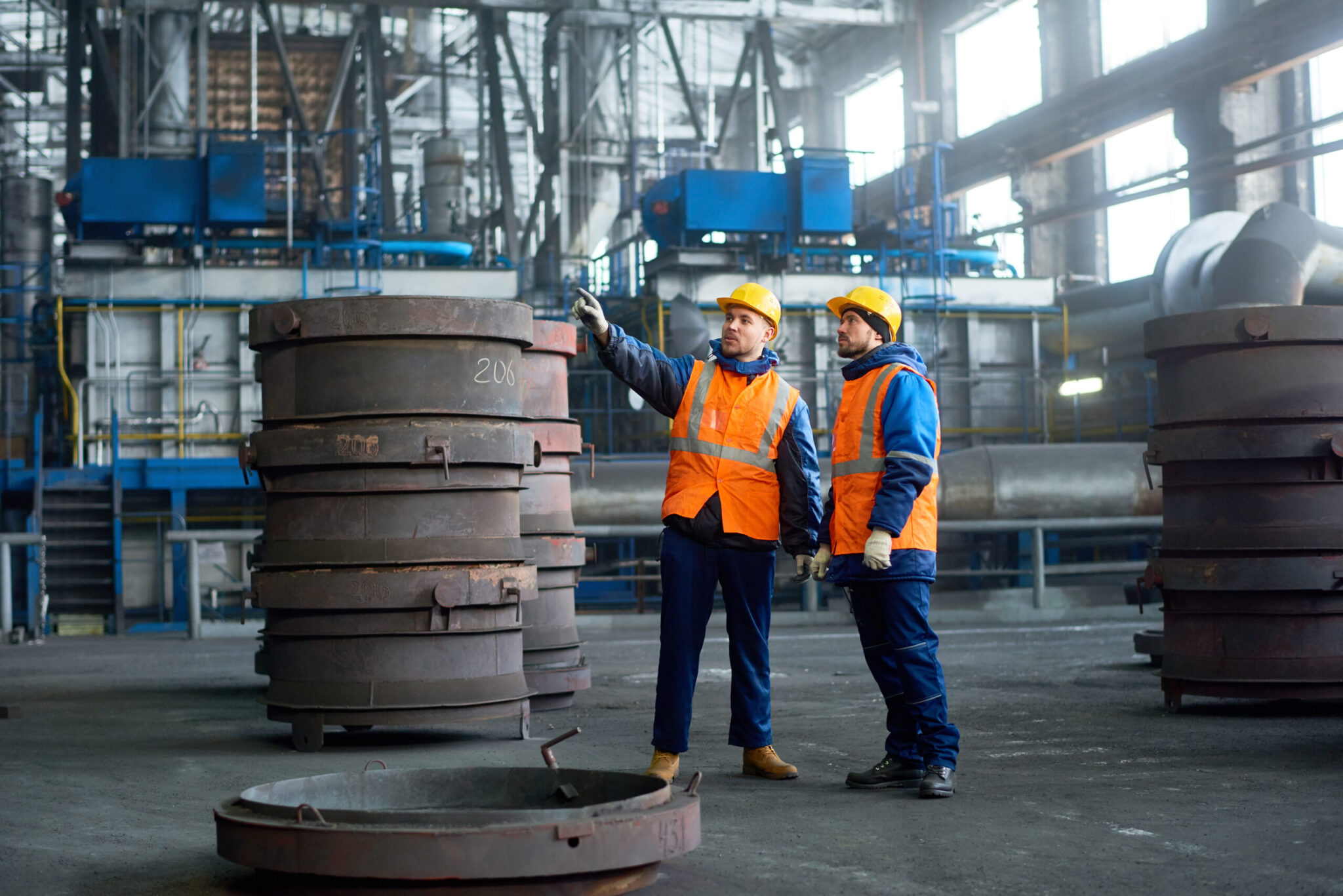
What Type of Commercial Air Compressor Does an Auto Shop Need?
September 13, 2023
Benefits of Rotary Screw Air Compressors for Energy Applications
October 4, 2023A Quick Guide to Accurately Size Air Compressor Tanks
Kaishan USA | September 27, 2023 | Uncategorized

Air compressor tanks help balance the supply of air from the compressor with the demand from the system. They can also help accommodate surges in demand, acting as a reservoir during peak times.
Storage plays an integral role in any compressed air system. Air compressor tanks help balance the supply of air from the compressor with the demand from the system.
As a result, tanks can help accommodate surges in demand, acting as a reservoir during peak times. And they help remove water from the compressed air system, minimize pulsations in the air flow and ensure smooth operation.
In addition, a well-sized storage tank can significantly impact energy efficiency. Properly sized tanks reduce the number of compressor starts and stops, promoting energy conservation and extending the compressor's life. More on this subject later.
The Compressed Air & Gas Institute (CAGI) recommends up to 10 gallons per CFM and provides a formula to calculate the air receiver size based on time allowed for the pressure drop. The main point is that the tank should be sized so the system does not cycle more than ten times per hour.
Since there are seven and a half gallons for every cubic foot, 50 CFM translates into 1,500 gallons of storage. That might sound like a lot of storage. But, depending on the size of the peaks in demand, it may not be enough. Here’s why. Let's say you have a 100-gallon tank at 100 PSI, but your application uses 200 CFM. Should you have a surge in demand, you'll see the tank pressure drop by one atmosphere (14.7 PSIG) every 30 seconds. That doesn’t give you a lot of time.
And the reality is that a receiver tank needs differential pressure to store air. If it has the same inlet pressure and outlet pressure, you don't have any stored energy (or air). Without differential pressure in the tank, it's just a big piece of pipe.
As a result, if a peak event is more than 30 seconds, it’s probably too large to be handled by storage alone.
Wet vs. Dry Compressed Air Tanks
Compressed air can also be stored “wet” or “dry,” with wet storage tanks located before the air drying system and dry tanks located after the dryers.
The big advantage of dry storage is that it offers compressed air ready for use right out of the tank. That reduces the risk that high-demand events will push demand beyond the air dryer’s capacity.
Wet storage, however, allows excess water and lubricant to condense out of the system before it hits the filter and dryer. It thus increases your air dryer’s energy efficiency and prolongs the life of the pre-filter element. Plus, it eliminates the pressure drop on the air dryer side of the system that occurs with dry storage. Wet tanks are very important for desiccant dryer systems due to the large amount of air used when the towers switch.
A critical component for the wet tank is to ensure you have a working drain trap to drain the moisture and contaminants the wet tank captures. It’s a good idea to use a no-loss drain to ensure you do not waste the stored compressed air.
Most facilities have a combination of wet and dry storage, with a third of storage capacity as wet storage and two-thirds dry.

In a well-designed compressed air system, storage tanks go hand-in-hand with flow control.
Flow Control
To be truly functional, a compressed air system needs flow control. Flow control monitors the pressure at the control valve, releasing air from the air receiver tanks to keep the system stable. It lets you to maintain air pressure throughout your plant at the lowest optimum level, reducing discharge pressure on your compressors and cutting energy usage and cost.
Pressure-flow control thus buffers the compressors from the ups and downs of system demands.
Point-of-Use Storage
But what about an isolated system like sandblasting that's a heavy user of compressed air in a remote part of your plant?

A heavy use of compressed air, like sandblasting, might benefit from a point-of-use storage tank, also called a balance tank.
You can help your system significantly with point-of-use storage, which involves putting a tank next to that large compressed air use. Also called balance tanks, point-of-use storage makes sense for large plants that need to support heavy-use applications across great distances.
Control Storage
Rotary screw compressors use receiver tanks to provide control storage, which is slightly different from the process of ensuring you can meet peak demand.
Here’s how that works. Let’s say we have a compressed air system with the compressor’s pressure band set to load at 120 PSIG and unload at 130 PSIG.
Unfortunately, the compressor can’t unload immediately. As often happens, the compressor may switch back into the loaded state before the transition to the no-load state is complete. If that happens too frequently, it can lead to rapid cycling.
Rapid Cycling
Rapid cycling occurs when your compressor turns on and off constantly. It wastes energy, preventing the compressor from reaching its optimum operation.
Rapid cycling requires frequent maintenance and can lead to oil carry-over and overheating, which can be a safety hazard. Ultimately, it increases wear and tear on the motor, valves, bearings and other internal parts, reducing the compressor’s lifespan.
To ensure that doesn’t happen, we blow down the sump tank, discharging 130 PSIG air back into the air inlet. It takes about 10 to 20 seconds for the sump to blow down.
Blowing down the sump tank gives the compressor a larger buffer (a much larger pressure band), allowing it to run for extended periods before it reaches the upper limits of the pressure band and cycles back to the no-load state.
Another way to combat rapid cycling is modulation, which adjusts the inlet valve to a partially open position. Kaishan incorporates modulation into its units.
While modulation has traditionally been viewed as wasting energy, the loss is insignificant compared to the damage done by rapid cycling. It’s not out of the question to see a compressor with a ten-year expected life cycle fail after just six months of rapid cycling. Variable speed drives are a more energy-efficient way to address this issue, but cost more up front.

Kaishan is one of the few manufacturers incorporating modulation into units like the KRSP2 premium rotary screw air compressor.
But neither modulation nor VSDs take the place of appropriately sized storage. It’s the best practice for maintaining stable header pressure for these fast events that can occur and also for removing moisture.
Installation
Always follow your manufacturer’s instructions when installing storage tanks. A few specific tips include:
-
- Location. Make sure your tank is installed on a flat, level surface that is easily accessible and close to the compressor (except for point-of-use storage).
- Mounting. Use the brackets or mounts that come with the tank to install. Make sure it is level and stable.
- Connections. Connect the piping, following the manufacturer’s instructions. Generally the air from the compressor comes into the bottom of the tank, with the air going out to your plant discharged at the top. Install a drain at the bottom.
- Safety measures. Install appropriately-sized pressure relief valves and pressure gauges to ensure the tank does not exceed the design limits.
- Testing. When the installation is complete, check the system’s performance. Read the pressure gauge to make sure the system is achieving the targeted pressure. Look for any leaks, noises or vibrations.
Maintenance
To get the best performance out of your storage tanks, you’ll want to include them in your routine maintenance, including the following items:
-
- Visual inspection. Conduct a visual inspection of the receiver tank and its components, looking for signs of corrosion, leaks, weld-seam stress, cracks, thinning of vessel walls, defects or physical damage. Ensure that safety relief valves are in good condition and are not blocked or obstructed.
- Drains. Your receiver tank is one of the primary locations where moisture collects in your system. Install automatic drain valves or manual drains to allow easy moisture removal and check them daily. Drain the tank at least once daily or according to the manufacturer's recommendations.
- Air leaks. Leaks not only waste energy but also put extra strain on your compressor. Inspect all connections, fittings and pipes for air leaks. Use soapy water or an ultrasonic leak detector to identify and fix any leaks promptly.
- Air filters. Clean or replace inline air filters regularly to prevent debris and contaminants from entering the receiver tank and downstream equipment. Clogged filters can reduce the system's efficiency and increase maintenance requirements.
- Pressure levels. Check the pressure gauge to ensure the receiver tank is operating within the recommended pressure range, and the gauge is functioning properly. High pressure can lead to tank failure. Low pressure may result in inefficient performance.
- Regular inspections. Ask a qualified technician to conduct routine inspections, thoroughly examining the receiver tank, safety valves, pressure gauges and other system components. These inspections will help detect potential issues early and prevent costly breakdowns and safety issues. You may also want to check for state and local regulations requiring periodic inspections.
- Integrity testing. At least once a year, conduct a tank-integrity test, such as a hydrostatic test, to check for structural weaknesses and ensure the receiver tank's integrity. This test is particularly crucial for older tanks.
- Safety training. Provide safety training for all tank operators.
Local Help
If you need help determining how much storage you need or how to maintain your existing tanks, we can help. Kaishan USA works with a nationwide network of independent distributors, who can provide on-site help and consultation as needed. These factory-trained air compression experts have an investment in their local communities and can service your air compressor system without a problem.

Need help in sizing storage tanks for your compressed air system? Kaishan works with a nationwide network of independent distributors, who can provide on-site help and consultation about storage or any other compressed air need.
Key Takeaways
-
- Air compressor tanks help balance air supply and demand.
- Storage helps in accommodating surges in demand and removing water.
- A well-designed air compressor system needs flow control.
- Control storage helps prevent rapid cycling, which can damage a compressor.
- Inspect tanks as part of your regular maintenance program.
Let Us Help
Having correctly sized storage is critical to the operation of your compressed air system and all the processes that rely on that system. If you need help determining how much storage you need, get in touch with the experts at Kaishan. Contact us today.
Random stat or
customer quote
textXXtext
text
Storage plays an integral role in any compressed air system. Air compressor tanks help balance the supply of air

